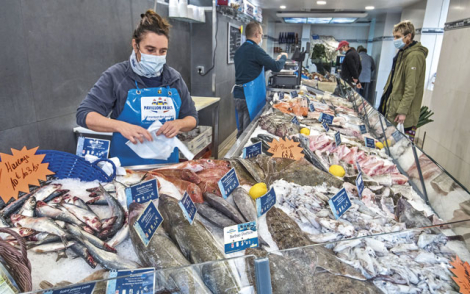|
2.84 million tons Volumes of white fish imported by the EU in 2018. + 17 % The increase in tonnage of whitefish imported from Iceland into the EU in 2018. 21 % The market share of imports from China. |
White Fish : Europe becomes greedier Imports represent 90% of EU consumption. Demand for white fish in the European Union grew by 1.7% in 2018 to 3.2 million tons of whole fish equivalent, according to the figures of the latest survey by the Association of European Fish Processors and Importers (AIPCE). This is the third consecutive year that the 3 million ton mark has been broken. According to experts, the high level of quotas in several of the major fisheries in the northern hemisphere has helped fuel the trend. In 2019, the market is expected to decline, partly due to an increasing global demand and partly due to the reduction of some of the quotas. Around 90% of the white fish consumed in the European Union is imported, i.e. 2.84 million tons, which represents an increase of 2%. More specifically, imports have increased the most for species such as Alaska pollock (+ 56,000 tons), hake (+ 39,000 tons) and saithe (+ 32,000 tons). Conversely, cod imports fell by 42 000 tons. Icelandic and Russian suppliers are on a roll As a result of an 11% increase in sales, the market share of Icelandic cod catches reached 25% in 2018, as opposed to 22% in 2017. And the trend is expected to continue. "Our quota system which has been in place since 1983, has enabled us to preserve waters teeming with fish," says Karl Johannesson of Viking Fresh. Icelandic fisheries are also able to land fresh fish in less than six hours, while their North Atlantic counterparts, often located at more than two days offshore, have no other choice than deep-freezing. As far as Alaska pollock is concerned, the European Union remains 100% dependent on imports. Owing to its sustained efforts regarding MSC certification, Russia has recorded a 45% increase in volumes, and now verges on a 20% market share. Overall, with its 589,000 tons of sales, China remains in the lead although its global EU market share has fallen to 21%, partly due to a drop in cod sales. “A prized resource” Scientific advice on the condition of biomass - including questions about the impact of rising water temperatures - and political issues concerning quotas or control of fishing zones are far from being the only factors influencing the white fish market. « We can expect prices to continue to rise in the coming years," explains Michel Le Moullec, purchasing director at Cité Marine. « The development of middle classes throughout the world will lead to an increase in consumption and therefore in prices. » However, managing to pass on a rise in prices to the retail sector continues to be a complex challenge for suppliers. « I understand that supermarkets are keen to offer low prices to their customers," comments Steven Libermann, Managing Director for Southern Europe at Nomad Foods, Europe's leading company for white fish. « Nonetheless, they have to take into account the fact that our raw material has become a prized resource. » Bertrand GOBIN |

